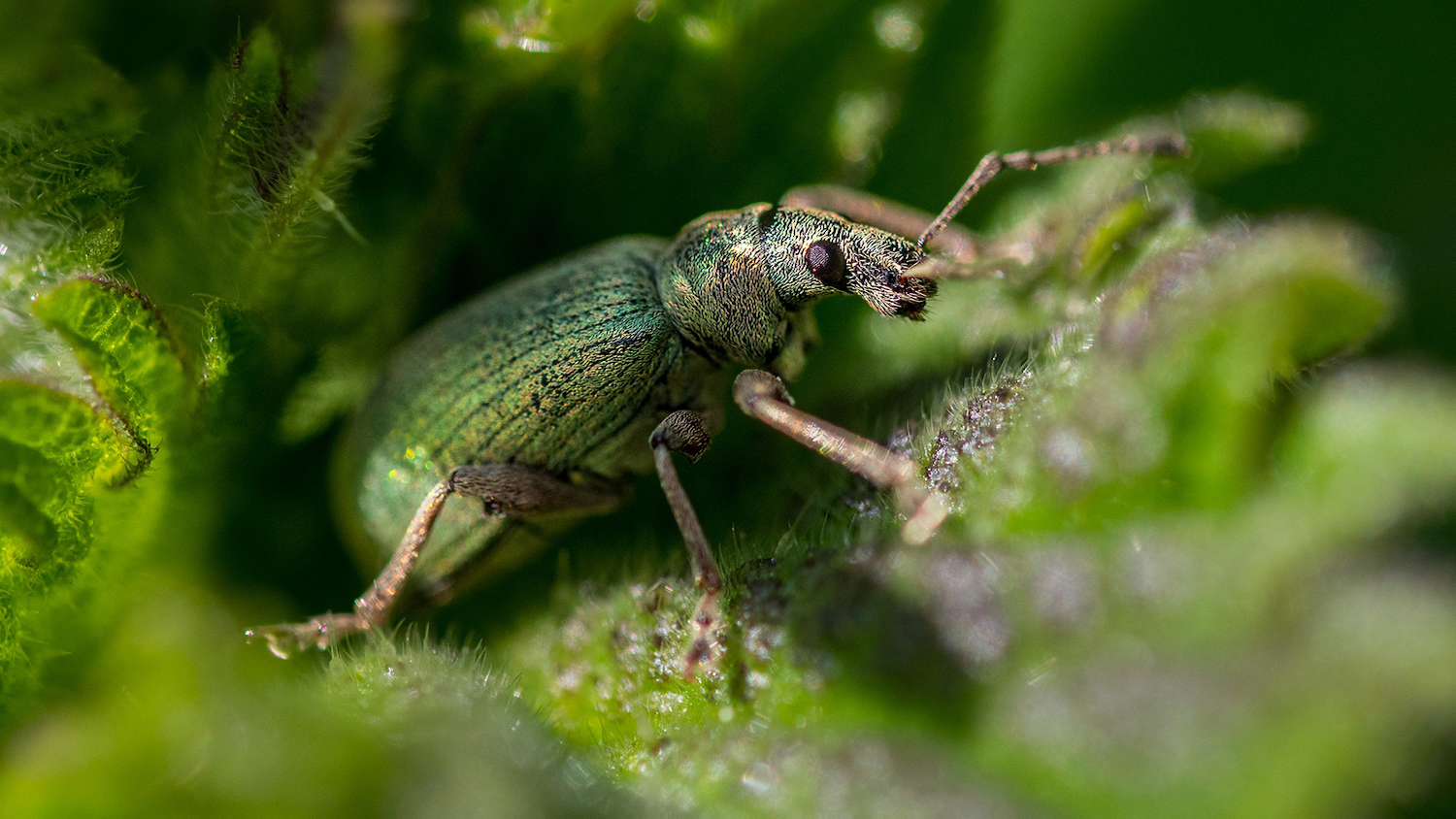How Big Data Can Help Predict the Spread of Pests and Pathogens

NC State’s Center for Geospatial Analytics and the USDA Animal and Plant Health Inspection Service (APHIS) are collaborating on several projects that use dynamic modeling to help decision-makers curb the spread of economically and ecologically destructive pests and pathogens.
Predicting the Future
Center Director Ross Meentemeyer; postdoctoral scholars Chris Jones, Vaclav Petras, and Anna Petrasova; and Forestry and Environmental Resources Ph.D. student Devon Gaydos are developing a novel computer model called PoPS (Pest or Pathogen Spread) to run management simulations in an easy-to-use online environment. PoPS is the result of the early work of Meentemeyer, who created the first mapped model in 2011.
Since then, new pests and pathogens have created a need for new models. Rather than piecemealing one model after another, Gaydos said she and her colleagues are creating a framework so different scenarios can be inputted easily, allowing stakeholders wider access to simulations.
Simulations help land managers know what to expect and how to prioritize management of pests and pathogens through seeking out funds, budgeting wisely and choosing other similar options. Simulations also help determine whether new infestations can spread in specific geographical conditions, giving managers the upper hand in proactive responses.
Pre-PoPS disease models were difficult to use. Without coding or GIF experience, land managers didn’t have the time to figure the models out, so they simply set them aside. The research team is changing that by making the models as user friendly as possible. They’re developing a website to accompany the PoPS model, which will make it accessible and convenient.
Also, for a non-computerized resource, they’ve created an interactive “Tangible Landscape” made from fiberboard. The landscape is set up like a table, allowing stakeholders to come together, tangibly simulate different scenarios and — with the click of a button — see the results of their management choices. This groundbreaking technology gives decision-makers the information they need to make sound decisions about land and forest management.
Saving Oregon’s Oak Trees
In Oregon, the “Tangible Landscape” tool is making a real difference for land managers who are concerned about the spread of Sudden Oak Death. The pathogen was introduced in the southwest corner of Oregon in 2001, and rigorous land management practices had kept its spread limited. But in recent years, a newer more aggressive form started attacking.
Because Oregon primarily ships timber from a northern port, an aggressive pathogen destroying their trees is a significant threat. Using a geospatial participatory modeling approach, Gaydos and her colleagues have taken the “Tangible Landscape” to Oregon, met with stakeholders, and received feedback on how to best use the technology to address their specific needs.
The researchers are currently tweaking the model for a return to Oregon to meet with a broader group of stakeholders who’ll use it to determine how to manage the current pathogen.
Gaydos says one of the greatest challenges of this work has been the complexity of the models, “If we want people to use them, they have to be user friendly.”
The team hopes to expand work with stakeholders. With more usable models and more participatory approaches, the chances of buy-in increase, and Gaydos hopes to continue helping stakeholders plan better. She and other members of the research team are also working to make forecasts more real-time, similar to weather forecasts.
“We check the weather in the morning, so we know whether to take a jacket or an umbrella with us,” Gaydos says. “Wouldn’t it be nice if land managers could check the pests and pathogen forecast as they make routine management decisions? That’s our goal.”
The research team will continue working to that end, involving more and more people in collaborative efforts to address pests and pathogen issues.
Post by Julie Johnson
- Categories:


